Nikon D7100 Hands On Review
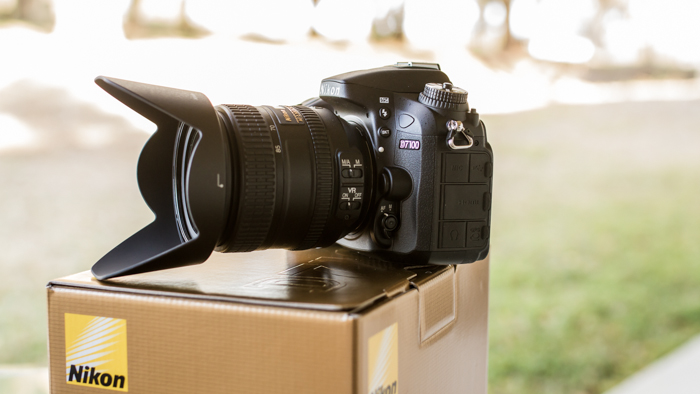 Nikon D7100 review, a 24mp camera with professional level weather sealing, 100% viewfinder coverage, 2 card slots, 6 fps shooting, great low light performance, for a price of only $1,200? It sounded like wishful thinking, until Nikon made it happen with the Nikon D7100. The rest of the specifications in a $1,200 camera sound more like a photographer's dream list with a max shutter of 1/8000, flash sync of 1/250th, up to 5 frames of exposure bracketing, 1.3x crop mode, and way more. You know that feeling when you just can’t get over those few features that the camera lacks (I’m looking at you Canon 6D)? You will not have that feeling anymore with the Nikon D7100. It literally has everything and way more than a $1,200 camera should have. In fact, this is the new entry point for a great camera. Sure, it isn’t full frame, but with some nice glass on the front of this body, you will certainly be capable of taking some amazing pictures in just about any environment. However nice the spec list is however, that only tells half the story. So we will take this camera and put it to the test to see how it works in real life.
Nikon D7100 review, a 24mp camera with professional level weather sealing, 100% viewfinder coverage, 2 card slots, 6 fps shooting, great low light performance, for a price of only $1,200? It sounded like wishful thinking, until Nikon made it happen with the Nikon D7100. The rest of the specifications in a $1,200 camera sound more like a photographer's dream list with a max shutter of 1/8000, flash sync of 1/250th, up to 5 frames of exposure bracketing, 1.3x crop mode, and way more. You know that feeling when you just can’t get over those few features that the camera lacks (I’m looking at you Canon 6D)? You will not have that feeling anymore with the Nikon D7100. It literally has everything and way more than a $1,200 camera should have. In fact, this is the new entry point for a great camera. Sure, it isn’t full frame, but with some nice glass on the front of this body, you will certainly be capable of taking some amazing pictures in just about any environment. However nice the spec list is however, that only tells half the story. So we will take this camera and put it to the test to see how it works in real life.
Hardware/Menu/Controls
The Nikon D7100 is not a very large camera. Those who own a Nikon D7000 will feel right at home, and those who have handled a Canon 7D will notice the D7100's lighter weight and smaller size. If size and weight are a concern for you, the Nikon D7100 will feel great, especially when you consider what you get. Stuffed in this body is a weather sealed metal shell, a shutter rated to 150,000 actuations, and a very nice feeling grip. The body however does not have the same metal feel as the Canon 7D for example and the Nikon feels more like a nice plastic with a soft grip. This is not a bad thing, just a bit different than I expected though it does lead me to believe that the body may chip more easily when knocked around (this remains to be seen though). Thank you Nikon for once again bringing dual SD card slots. While I have yet to lose a card, there is nothing greater than having dual backup of your images or having another card for overflow when needed. While Nikon shooters will be used to this feature coming from the D7000 (which also has dual SD card slots), many Canon shooters with the 7D, 60D, and even the new 6D, have been forced to do without this great feature. The menu will be very familiar to Nikon shooters and is fairly well laid out. While not exceptional by any stretch, it will give you access to the needed settings and a quick read of the manual will further explain any potential confusion.
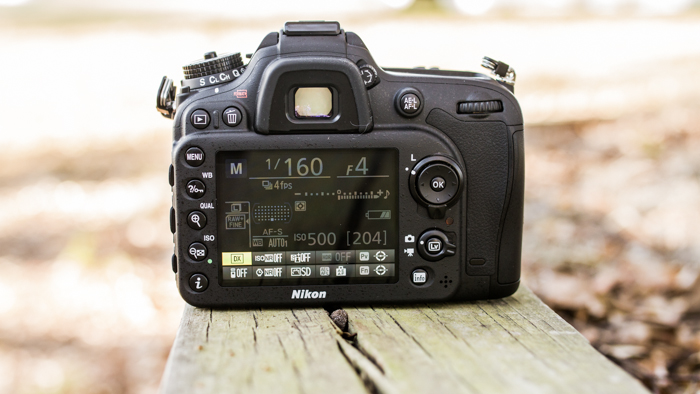 Thankfully, Nikon has pulled out the most used settings and gives you quick access to them on the body. The D7100 also has an added ‘i’ button that gives further access to some lesser used functions. While I didn’t find myself using this to access any of the controls other than the 1.3x crop feature, I still appreciate having it. While the controls are pretty standard for Nikon on this size body, I will point out some positives and negatives for those coming from other systems. I love having quick access to the bracket button. Also, the focus controls are great and navigating them is a breeze. However, the white balance and ISO buttons are difficult to find & press while looking in the viewfinder and sharing the ISO control with the zoom button will likely lead to some accidental presses.
Thankfully, Nikon has pulled out the most used settings and gives you quick access to them on the body. The D7100 also has an added ‘i’ button that gives further access to some lesser used functions. While I didn’t find myself using this to access any of the controls other than the 1.3x crop feature, I still appreciate having it. While the controls are pretty standard for Nikon on this size body, I will point out some positives and negatives for those coming from other systems. I love having quick access to the bracket button. Also, the focus controls are great and navigating them is a breeze. However, the white balance and ISO buttons are difficult to find & press while looking in the viewfinder and sharing the ISO control with the zoom button will likely lead to some accidental presses.
 Also, Nikon has opted to bring a locking dial to the top of the camera (similar to Canon), but also adds a secondary locking dial for other functions. While I love the idea of having access to these settings in the dial, the secondary dial is almost impossible to unlock and turn with one hand. If anyone knows how, please send me the video. Thankfully these are functions I will rarely be changing on the fly. The 3.2” screen is very large, bright, and sharp with 1.2 million dots. Unfortunately it seems to have a yellowish green tint to it which I have also seen on the D600 & D800. It becomes fairly difficult to get a good white balance using this screen in some situations although shooting RAW will likely mute this point for photographers. Additionally, the auto white balance seems to have some issues in bad lighting. One additional feature I love is that the 'OK' button can be programed to automatically zoom into a small area of the center of the frame with a single press. This feature, while common on pro level cameras, is not always seen on less expensive bodies. This is a huge time saver when checking focus as you do not need to press the zoom button 5 times to see the image at around 100%. If you have ever shot using this feature, it is difficult to go back to a camera that does not. Those used to Canon cameras may also take issue with the Nikon rear screen auto shutoff. The screen will turn off every time the shutter is pressed and will not turn on again unless you press the info button. Canon does give you the option to keep the screen always on, and turn it off as you please by pressing a button. For those who use the rear screen often (like when shooting high on a tripod), this does become a bit annoying though not really a problem.
Also, Nikon has opted to bring a locking dial to the top of the camera (similar to Canon), but also adds a secondary locking dial for other functions. While I love the idea of having access to these settings in the dial, the secondary dial is almost impossible to unlock and turn with one hand. If anyone knows how, please send me the video. Thankfully these are functions I will rarely be changing on the fly. The 3.2” screen is very large, bright, and sharp with 1.2 million dots. Unfortunately it seems to have a yellowish green tint to it which I have also seen on the D600 & D800. It becomes fairly difficult to get a good white balance using this screen in some situations although shooting RAW will likely mute this point for photographers. Additionally, the auto white balance seems to have some issues in bad lighting. One additional feature I love is that the 'OK' button can be programed to automatically zoom into a small area of the center of the frame with a single press. This feature, while common on pro level cameras, is not always seen on less expensive bodies. This is a huge time saver when checking focus as you do not need to press the zoom button 5 times to see the image at around 100%. If you have ever shot using this feature, it is difficult to go back to a camera that does not. Those used to Canon cameras may also take issue with the Nikon rear screen auto shutoff. The screen will turn off every time the shutter is pressed and will not turn on again unless you press the info button. Canon does give you the option to keep the screen always on, and turn it off as you please by pressing a button. For those who use the rear screen often (like when shooting high on a tripod), this does become a bit annoying though not really a problem.
Autofocus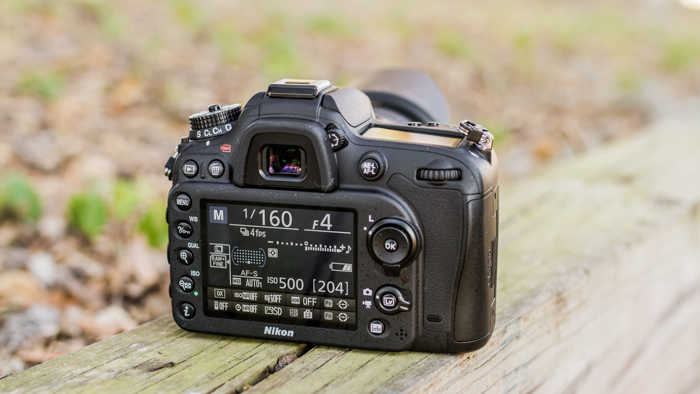 With 51 points to choose from, the D7100 is an auto focus lover’s dream camera. The points spread out all the way to the end on the horizontal axis, although there is still some space at the top and bottom of the frame with no points around. Either way, it is probably the best coverage of any APS-C DSLR so far. Additionally, using the 1.3x crop mode brings these points even closer to the edge of the frame. Each point though seems a bit on the large side and getting super accurate focus on a small object in the frame may be a bit more difficult. Canon, for comparison, offers a spot focus point (an even smaller point) in addition to the regular single point for precise focus of small objects in the frame. I did find myself struggling to focus on small areas (such as a bird) using the single focus point as a result and many times the point was larger than the bird in the frame. However, when focusing on a larger object, focus was quick, accurate, and I had plenty of points to choose from. The only other small disappointment was that the cross type focus points that tend to focus better with low contrast subjects (such as a white wedding dress) tend to be clustered towards the center. However, Nikon still gives you 15 of these points and I am overall very pleased with the focus system, the amount of focus points, and the fact that these points filled the frame nicely.
With 51 points to choose from, the D7100 is an auto focus lover’s dream camera. The points spread out all the way to the end on the horizontal axis, although there is still some space at the top and bottom of the frame with no points around. Either way, it is probably the best coverage of any APS-C DSLR so far. Additionally, using the 1.3x crop mode brings these points even closer to the edge of the frame. Each point though seems a bit on the large side and getting super accurate focus on a small object in the frame may be a bit more difficult. Canon, for comparison, offers a spot focus point (an even smaller point) in addition to the regular single point for precise focus of small objects in the frame. I did find myself struggling to focus on small areas (such as a bird) using the single focus point as a result and many times the point was larger than the bird in the frame. However, when focusing on a larger object, focus was quick, accurate, and I had plenty of points to choose from. The only other small disappointment was that the cross type focus points that tend to focus better with low contrast subjects (such as a white wedding dress) tend to be clustered towards the center. However, Nikon still gives you 15 of these points and I am overall very pleased with the focus system, the amount of focus points, and the fact that these points filled the frame nicely.
Image Quality
 Images look amazing on the Nikon D7100. Pictures have plenty of contrast, sharpness, and great looking color...with one exception. The auto white balance of the Nikon D7100 is far from perfect in bad lighting. While I had few issues with it outside, it was remarkably bad at picking a decent white balance indoors under mixed lighting. Normally (when not shooting product photography), I personally shoot RAW, put the camera to auto WB, hope it gets close, and tune it as desired in post.
Images look amazing on the Nikon D7100. Pictures have plenty of contrast, sharpness, and great looking color...with one exception. The auto white balance of the Nikon D7100 is far from perfect in bad lighting. While I had few issues with it outside, it was remarkably bad at picking a decent white balance indoors under mixed lighting. Normally (when not shooting product photography), I personally shoot RAW, put the camera to auto WB, hope it gets close, and tune it as desired in post.
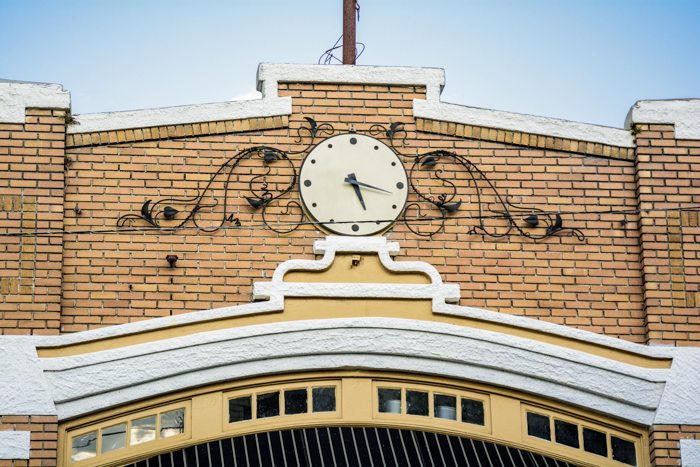
On the Nikon D7100, the auto WB was so far off in some indoor shots that my images would not be usable unless changed in post and the yellowish green tint of the screen did not help. This behavior has also been typical in the D800 and D600 cameras. This is not a big deal for those of you who (and just about all of you should) shoot in RAW as you can make the changes after in post, but it can be a bit annoying. When shooting JPEG or video though, I would stay away from auto white balance in bad lighting.
One big advantage to Nikon cameras of late has been dynamic range. The RAW files store an impressive amount of detail in the highlights as well as shadows (though mostly in the shadows) giving you the option of pushing these shadows in post. This yielded dynamic range typically only seen in HDR multiple exposure images. Not only is this detail preserved, but pushing it only resulted in a small amount of additional grain (easily removed with noise reduction) and not any of the typical banding we see in Canon cameras under these extreme conditions. If you expose for the highlights, you can almost always boost the shadows in post yielding HDR levels of dynamic range in a single image with just a small amount of additional grain.
Unedited
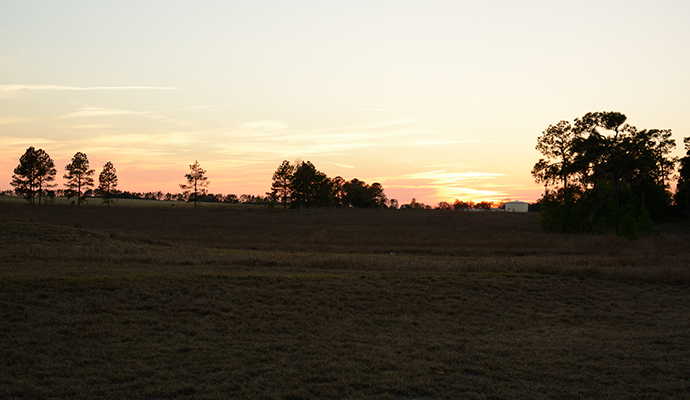
Shadow boost +100% Highlight Reduction 100%
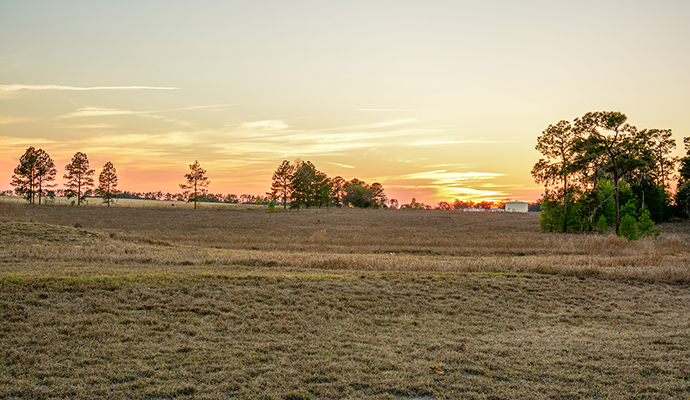
Low light results were impressive as well. Images look great all the way to 1600 ISO, even when viewed at 100%. Boosting these levels a bit further to 3200 brought on some noise, but the Nikon D7100 still held it together and I would have no problem using my 3200 ISO images for just about anything. Taking these images a bit further by boosting these levels to 6400 ISO resulted in an image that still looked OK when viewed at normal resolutions, though the loss of color became more obvious and the blacks began to have a purple hue. Zooming in on these photos further enhanced the issues and would keep me away from 6400 ISO for most uses. However, a great looking 3200 ISO image is a great achievement for Nikon, especially considering the APS-C camera contains 24 megapixels.
ISO 1600 - No noise reduction
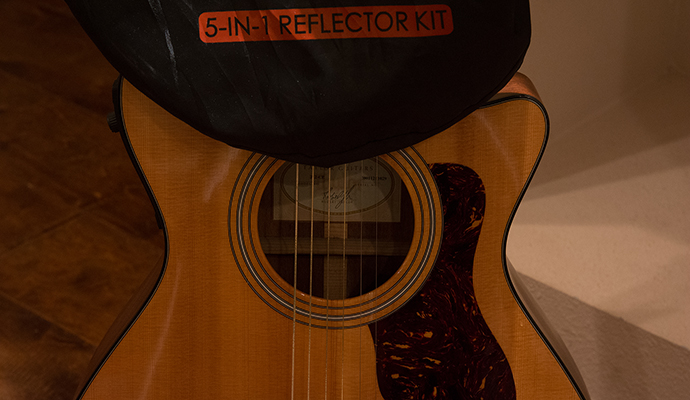
ISO 3200 - No noise reduction
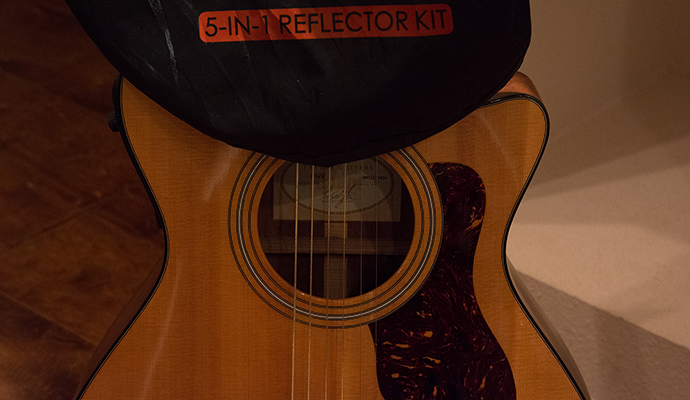
ISO 6400 - No noise reduction
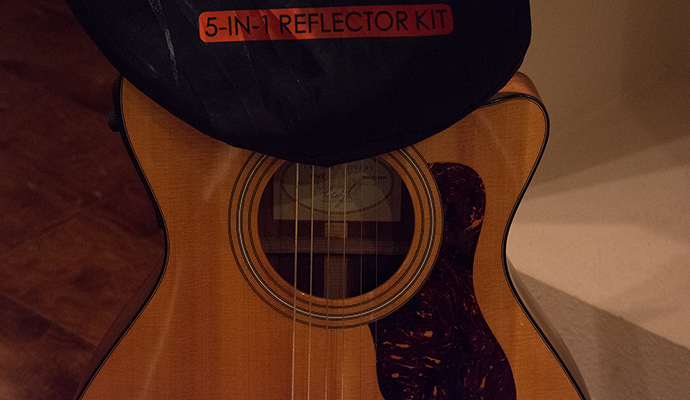
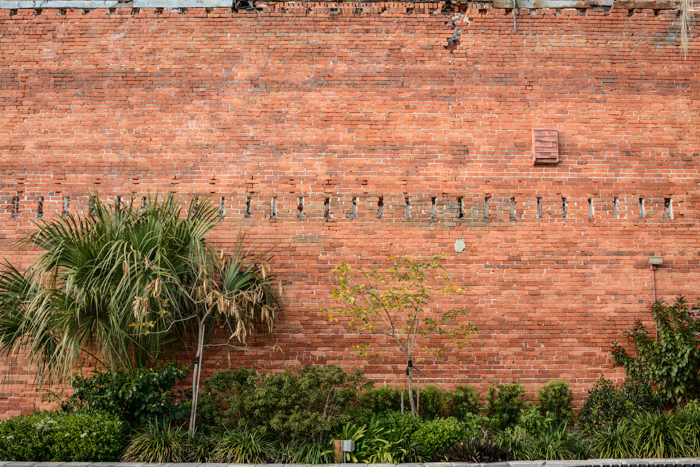 Nikon also chose to remove the optical low pass filter in the Nikon D7100. This decision proved to be a decent one as well as I experienced no issues in photographs, although some were present while shooting video (more on that in a later section). Photographs were sharp and clean at low ISO values. Landscape lovers will surely love the sharp images, deep shadows, and clean blacks. I can’t think that anyone would be disappointed with the image quality from this camera, even at ISO levels up to 3200.
Nikon also chose to remove the optical low pass filter in the Nikon D7100. This decision proved to be a decent one as well as I experienced no issues in photographs, although some were present while shooting video (more on that in a later section). Photographs were sharp and clean at low ISO values. Landscape lovers will surely love the sharp images, deep shadows, and clean blacks. I can’t think that anyone would be disappointed with the image quality from this camera, even at ISO levels up to 3200.
1.3X Crop Mode
Yes, this deserves its own section. The crop mode, first noticed with the super high megapixel D800 allows the camera to only use the center portion of the sensor and thus achieve the same level of image quality, with slightly fewer megapixels (15mp to be exact), and add an extra 1.3x to the focal length of a lens. For those who do not realize the power this gives, this feature just turned a 70-20mm f/2.8 lens into a 137-390mm f/2.8 lens!!! Nikon’s 400mm f/2.8 prime lens costs over $8000 and the 200-400mm f/4 lens (a stop slower) is upwards of $6,500 for comparison. Yes, your image will only be 15mp, but that is plenty for almost anything you could possibly want to shoot. I did find myself using it on occasion when I wanted a bit extra reach and the results were certainly just as amazing as with the normal DX crop. If you have ever wished you had a bit extra reach from your lenses and don’t mind a 15MP camera (this should be just about everyone), you will absolutely love this feature.
However, the crop factor for video did seem to lead to a drop in sharpness. Of course, the results are way better than cropping video in post, but for video, the normal DX crop yielded better results than the additional 1.3x crop mode.
Video
{youtube}
Nb1FbZcIfvw
{/youtube}
Video on this camera looks great. In addition, Nikon also decided to include a stereo mic (no, you won’t want to use it), a mic input, and a headphone out. Audio controls are also displayed on the screen while shooting although the mic levels could not be changed mid shoot. Video seemed sharp, fluid, and void of any big issues. Shooting video of a concrete & brick wall did show some aliasing while panning but not really any moire. While it was distracting, I actually expected worse due to the removal of the AA filter that typically is used to prevent this. Video results were impressive for sure and I am happy to see an amazing level of sharpness in the video. I know I have said this before about the D7100 & D600, and I’m not sure if there is something about how Nikon controls aperture that prevents them from doing this, but acquiring proper exposure for video is a pain to say the least. Not only can the D7100 not change the aperture while shooting, it cannot even change the aperture while in live view! While this can also be an issue for live view photographers, I typically chose my aperture first when shooting photos, and thus rarely find myself needing to change it while in live view. For video however, most of us lock our shutter at around twice the frame rate, and use the aperture & ISO values to vary the exposure (assuming you do not have a variable ND filter). Thus, getting my exposure meant guessing my aperture, going into live view to check exposure, going back out of live view to change it, and back into live view to test the change. This process could be repeated depending on how good of an exposure guesser you are. Ultimately though, this is merely an annoyance and will not at all affect the performance of the camera, though it will likely increase the amount of time you need to set the exposure for video.
{youtube}
ZEejCOqccC0
{/youtube}
Auto focus on the Nikon D7100 worked just about as well as you could hope for considering this is a DSLR with a mirror. No, it is not as quick as a video camera, you will see a bit of hunting, and you will hear the focus motor in the video, but it is better than nothing for sure and will work in a pinch. It is still far from the level I would need to shoot anything for professional use, but I certainly will be using it for any other casual video. Considering Canon does not offer any form of live AF with video in most DSLRs, this is a welcome feature.
Conclusion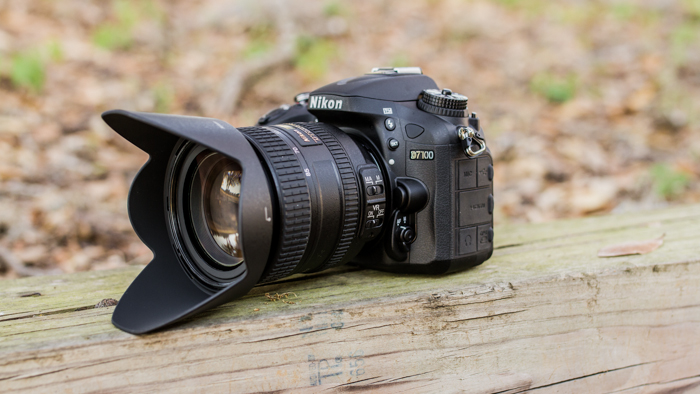 As of today (subject to change), the Nikon D7100 is the best DSLR available for $1200 and probably the best DX camera available. The image quality is amazing and the spec list is great enough to put a smile on the face of even professional photographers. Yes, there are some small annoyances most notably with the yellowish green tint to the screen, ISO button location, secondary shooting mode dial, and aperture lock in live view. However, these issues all have work arounds and do not affect the end result of the image quality. Video users will likely take some issue with the aperture and white balance, but the excellent video sharpness will speak for itself. While there is nothing particularly new that Nikon has done with the D7100, they surely pulled the best elements from every other camera Nikon has on the market, and have combined them all perfectly for a stellar price. Being able to acquire a camera this amazing for only $1,200 will surely make this a top selling camera. Of course you can get a D5200 for less, but there will be plenty of features you will likely still be longing for. D7100 is a camera without compromise, with professional features, a build quality that will stand the rugged use and abuse of a professional photographer, and image quality that is outstanding.
As of today (subject to change), the Nikon D7100 is the best DSLR available for $1200 and probably the best DX camera available. The image quality is amazing and the spec list is great enough to put a smile on the face of even professional photographers. Yes, there are some small annoyances most notably with the yellowish green tint to the screen, ISO button location, secondary shooting mode dial, and aperture lock in live view. However, these issues all have work arounds and do not affect the end result of the image quality. Video users will likely take some issue with the aperture and white balance, but the excellent video sharpness will speak for itself. While there is nothing particularly new that Nikon has done with the D7100, they surely pulled the best elements from every other camera Nikon has on the market, and have combined them all perfectly for a stellar price. Being able to acquire a camera this amazing for only $1,200 will surely make this a top selling camera. Of course you can get a D5200 for less, but there will be plenty of features you will likely still be longing for. D7100 is a camera without compromise, with professional features, a build quality that will stand the rugged use and abuse of a professional photographer, and image quality that is outstanding.
Click to View & Download the images from this review!
Click for a hack to open D7100 RAW files in Adobe Lightroom





